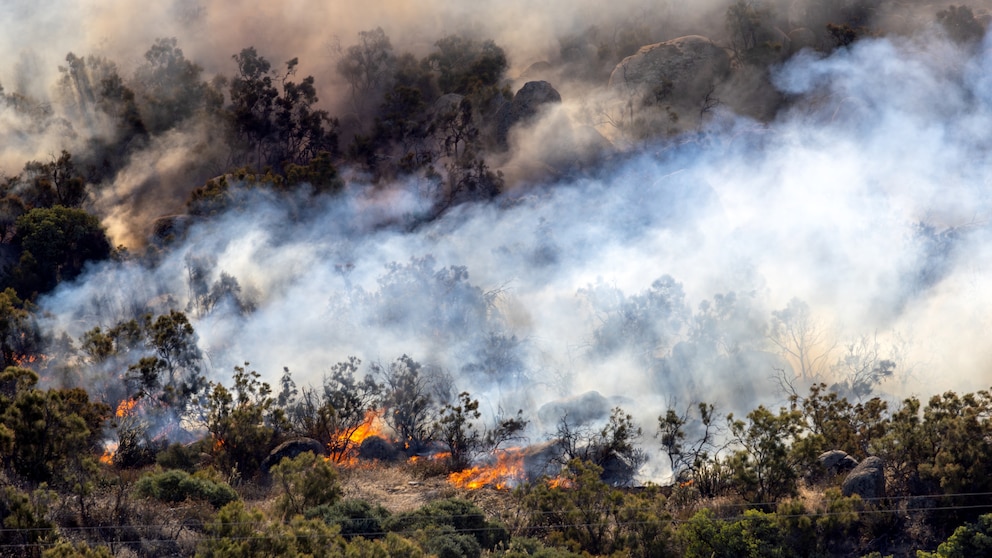Climate change is making it harder to “maintain safe homes and healthy families” in the United States, according to an extensive report compiled by experts across the federal government and released Tuesday.
The report issues a stark warning that extreme events and harmful impacts of climate change that Americans are already experiencing, such as heat waves, wildfires, and extreme rainfall, will worsen as temperatures continue to rise.
The Fifth National Climate Assessment, issued every five years, is a definitive breakdown of the latest in climate science coming from 14 different federal agencies, including NOAA, NASA, the EPA, and the National Science Foundation.
This year’s report is more comprehensive than in previous because climate modeling has improved, and the authors took a more holistic look at physical and social impacts of climate change.
“We also have a much more comprehensive understanding of how climate change disproportionately affects those who’ve done the least to cause the problem,” Katherine Hayhoe, a climate scientist at Texas Tech University and co-author of the report, said in a briefing with reporters.
Some communities are more vulnerable to the impacts of climate change, the report says, warning that Black, Hispanic, and indigenous communities are more likely to face challenges accessing water as droughts become more intense. Climate change also creates more health risks for marginalized communities, according to the report, which says that “systemic racism and discrimination exacerbate” the impacts.
The report lays out how every part of the US is being impacted by climate change and that some areas are facing multiple worsening impacts at the same time. For example, western states saw heat waves and wildfires during the first year of the COVID-19 pandemic, which strained resources and added to the risk of severe illness.
In the same year, back-to-back storms during the record-breaking 2020 Atlantic Hurricane Season are some examples of climate-driven compounding events that caused unprecedented demand on federal emergency response resources.
The report detailed some impacts of climate change that are being felt across the U.S., including increased risk of extreme heat and rainfall, among other weather-related events.
Other impacts cited were coastal erosion and threats to coastal communities from flooding; damage to land including wildfires and damage to forests; warming oceans and damage to ecosystems like coral reefs; risks from extreme events like fires; heatwaves and flooding, and increased inequality for minority or low-income communities.

Lake Mead, the country’s largest man-made water reservoir, formed by Hoover Dam on the Colorado River in the Southwestern United States, has risen slowly to 47% capacity as viewed on Aug. 14, 2023 near Boulder City, Nev.
George Rose/Getty Images
Some areas of the U.S. are also seeing more specific impacts, such as more intense droughts in the Southwest.
The assessment also notes changes in storm trends as a result of climate change. Heavy snowfall is becoming more common in the Northeast and hurricane trends are changing, with increases in North Atlantic hurricane activity and the intensification of tropical cyclones.
2023 was a record setting year for billion-dollar climate disasters in the United States, officials noted in a White House briefing last week.

A resident, right, observes the remains of her home after it was destroyed during the Highland Fire in Aguanga, Calif., on Oct. 31, 2023. A wildfire fueled by gusty Santa Ana winds ripped through rural land southeast of Los Angeles, forcing about 4,000 people from their homes, fire authorities said.
Ethan Swope/Bloomberg via Getty Images
The report also highlights some areas of success, saying more action has been taken across the board to reduce emissions and address climate change since the last report in 2018.
Greenhouse gas emissions generated by the U.S. have been steadily decreasing since their peak in 2007, even as the energy demand goes up — mainly due to a vast reduction in the use of coal, according to the report.
Efforts to adapt to and respond to climate change need to be more “transformative,” the report found. This includes reducing the use of coal, building more wind turbines and electrifying buildings and making more efforts to protect people from the impacts of climate change.

Scenes from the flooded Foster Farms plant on Racine St. in Corcoran, Calif., on July 18, 2023.
Robert Gauthier/Los Angeles Times via Getty Images
Individuals and government leaders should look at the report as a way to help communities across the country mitigate, adapt and become more resilient to the effects of climate change, White House Climate Adviser Ali Zaidi said.
The assessment demonstrates “both a real and profound environmental risk, but also a real and profound economic opportunity,” Zaidi said. The administration has also noted that adding clean energy jobs is a top priority.

A plane drops fire retardant during the Highland Fire in Aguanga, Calif., on Oct. 31, 2023.
Ethan Swope/Bloomberg via Getty Images
The last time the National Climate Assessment was released, then-President Donald Trump said he did not believe the findings.
The 2018 report found that climate change could lead to massive economic loss, especially by vulnerable communities.

